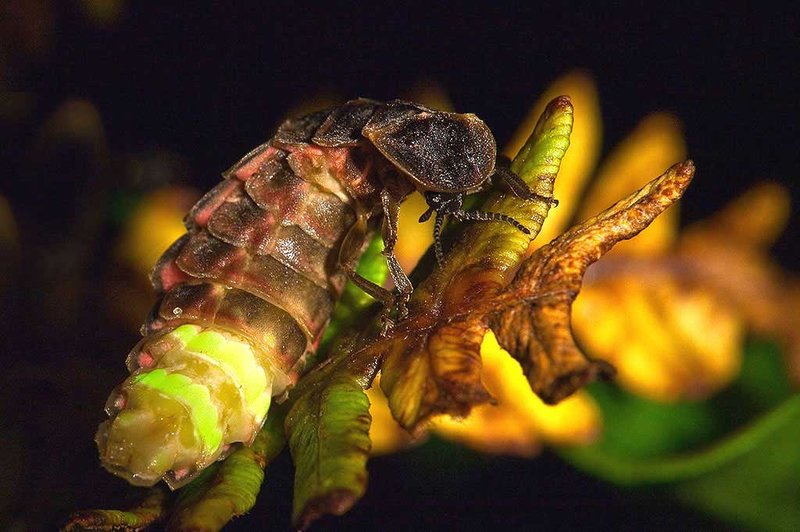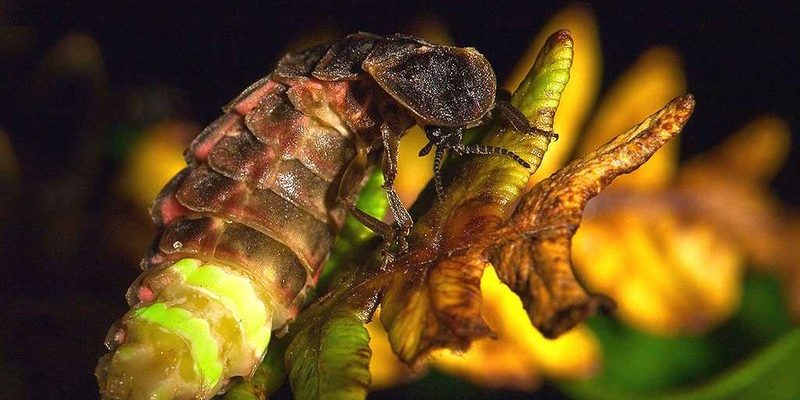
Imagine being a glow worm nestled in a dark cave, emitting a soft, mesmerizing light to attract prey, such as insects lured to your glowing silk traps. Life might seem idyllic until you remember that there are creatures out there who see you as dinner. This blog will explore the various predators that prey on glow worms, discussing the tricky balance of nature and survival.
What Are Glow Worms?
Before we jump into their predators, let’s understand what glow worms are. Glow worms aren’t actually worms. They’re the larvae of various types of beetles, namely the *Lampyridae* family, which includes fireflies. These larvae glow due to a chemical reaction in their bodies, using the light to attract insects. Think of them as tiny lights in the dark, and their glow serves a critical purpose: attracting food.
In addition to attracting prey, the glow also plays a protective role. It can confuse predators or signal that these larvae are not a good choice for a meal because they contain toxins. However, this isn’t always enough to keep them safe.
Common Predators of Glow Worms
Glow worms may shine bright, but many creatures are keen on making them a meal. Here are some of the main culprits:
- Birds: Many species of birds, particularly nocturnal ones, find glow worms irresistible. Their bright light in dark environments makes them easy targets.
- Spiders: Certain spiders, especially larger ones, will take advantage of glow worms when they’re helplessly caught in their silk traps.
- Reptiles: Some lizards, like skinks, enjoy munching on glow worms, especially when they’re resting on the ground during the day.
- Insects: Other insects, including larger beetles and wasps, may also prey on glow worms, chasing them down or snatching them right off their silk threads.
Each of these predators has its unique strategy for catching these glowing larvae, showcasing how the predator-prey relationship works in nature.
Birds: The Sky Hunters
When it comes to glow worm predators, birds are often the most well-known. Nocturnal birds, like owls, are particularly skilled at spotting these luminous larvae in the dark. Their keen eyesight allows them to see the glow from a distance, making glow worms a convenient snack.
But it’s not just owls; some species of bats also feed on glow worms. Bats, with their echolocation abilities, can easily locate larvae hanging in caves. These winged hunters swoop down, sometimes snagging a few glow worms in one go.
Here’s the thing: while birds and bats are naturally inclined to eat glow worms, their predation is vital for the ecosystem. It helps control the glow worm population and ensures that only the healthiest larvae survive to adulthood.
Spiders: The Silent Stalkers
Spiders are stealthy creatures that play an interesting role in the ecosystem. Some spiders, especially those that weave webs with sticky silk, can pose a real threat to glow worms. When a glow worm is trapped in its silk thread, a spider can approach quietly and quickly.
Imagine a tiny spider crawling up to a glow worm, which is busy shining its beautiful light to attract prey. The spider seizes the moment and wraps up the glow worm before it even knows what’s happening. This predator-prey dynamic emphasizes the harsh realities of nature, where one creature’s light can mean another’s lunch.
Interestingly, some spiders might exploit the glow of glow worms to attract their own prey, creating a fascinating inter-species relationship.
Reptiles: The Ground Hunters
Some reptiles have also developed a taste for glow worms. Skinks, small lizards found in various habitats, are known to munch on these glowing larvae when they come across them. During the day, when glow worms are resting, skinks might just be lurking nearby, ready to pounce.
The surprising part? Some snakes have been observed feeding on glow worms as well. They may not be the typical predator you think of, but they are opportunistic eaters. If they find a glow worm dangling from a silk thread, they might take a quick bite.
Reptiles, particularly those that dwell close to moist environments like caves, are sometimes in the right place at the right time for a tasty snack.
Insects: The Fellow Predators
Insects can be some of the fiercest competitors for glow worms. Larger beetles or wasps are known to actively hunt glow worms. They often adopt a strategy of ambush, waiting for the right moment to strike.
In fact, the competition among insects can be brutal. A larger predatory beetle might take advantage of a glow worm’s luminescence, hunting it down much like birds or reptiles do, but from the air.
It’s fascinating to see how glow worms aren’t just prey for larger creatures but are also targeted by their insect cousins. This creates a dynamic food web that highlights the interconnectedness of all life forms in a habitat.
The Importance of Predation for Glow Worms
While it may seem harsh that glow worms have so many predators, this natural balance plays a crucial role in their ecosystem. Predation helps maintain the right population levels, ensuring that resources like food and habitat are not overused.
Furthermore, those glow worms that do survive often grow into healthier adults, having naturally selected for traits that help them escape predators. This means the process, although tough, contributes to the overall resilience of the species.
And let’s not forget that the glow of these worms captivates nature enthusiasts and scientists alike. Areas where glow worms thrive can become tourist attractions, helping local economies while also protecting these unique creatures.
Final Insights
Glow worms may have predators lurking in every shadow, but that only adds to the beauty and complexity of nature. Their glow is a beacon of life, drawing in both prey and predators alike. Understanding who eats glow worms gives us a deeper appreciation for the intricate web of life surrounding these fascinating creatures.
So the next time you come across a glow worm lighting up the night, remember it’s not just a pretty sight but also a reminder of nature’s delicate balance. These little lights play a vital role in their ecosystems, serving as both hunters and the hunted. Let’s continue to celebrate and protect their shimmering presence in the wild.

